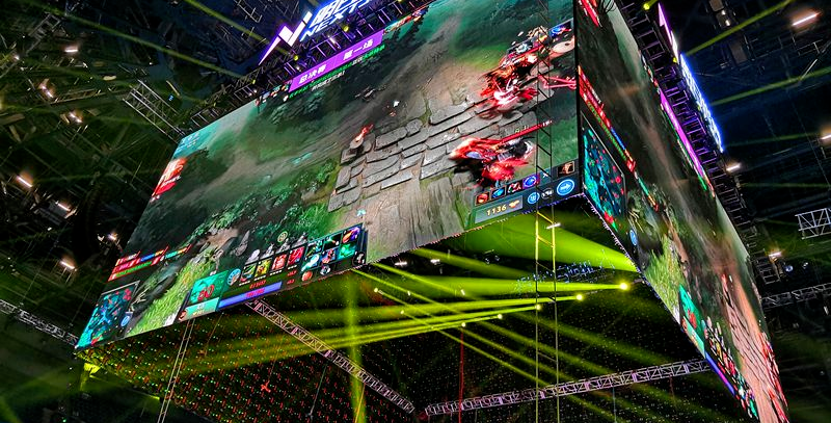LED Screens for Esports Events
/The integration of pop culture, global investors, brands, live streaming and social sharing has driven the explosive growth of the esports industry. Various esports games have then gradually established league mechanisms, bringing new market opportunities for other industries.
Among them, esports live streaming, as one of the most important parts of esports events, has guided a new direction for the LED display screen industry and promoted the development of esports LED displays.
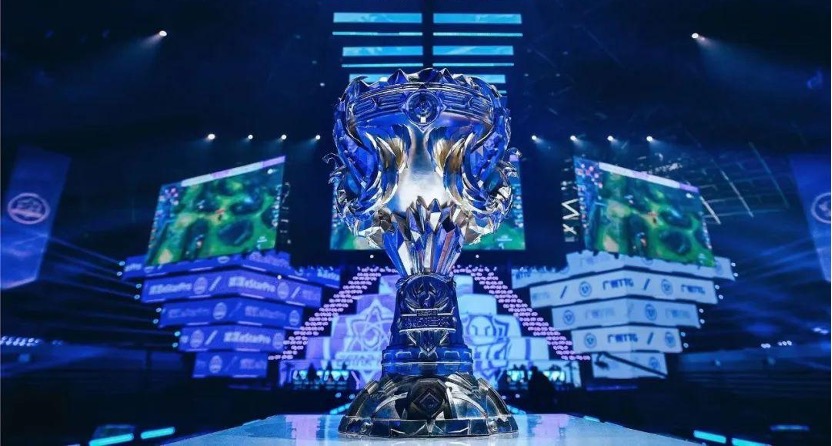
With the inclusion of esports in the 2022 Asian Games in Hangzhou, LED display screens have an unparalleled advantage in esports live streaming thanks to their ultra-high definition, 5G + 8K, multi-screen interactivity, and other technology support.
In order to allow fans from any angle to enjoy the high-definition visual and fully experience the esports competition, the Hangzhou Asian Games Electronic Competition Venues installed 15 huge high-definition LED display screens for real-time live broadcast.
LCD vs LED vs OLED Screens for Esports
Since the presentation of real-time game images is the main focus of the display requirements in gaming competitions, there are tight criteria for the size and instant response of the display screen. More than that, in order to show the audience every aspect of the fight process, a huge screen with high brightness, contrast, and color saturation is also required.
LED, LCD, and OLED are the three most common display types on the market today. Despite having the finest image quality, OLED screens are too expensive for use in widespread commercial applications. As the most primitive display technology, LCD screens fall short of LED screens in terms of brightness, clarity, contrast, and endurance.
An ideal option for esports events is an LED display screen. They have high refresh rates, high definition, high contrast, and they can combine with high dynamic, high frame rate, and 3D virtual reality to achieve an immersive viewing experience. LED display screens are good at showing the audience synchronization of every detail in esports. Additionally, LEDs can precisely show the stunning visual effects of the game world because it has brightness and contrast on par with or even better than OLED.
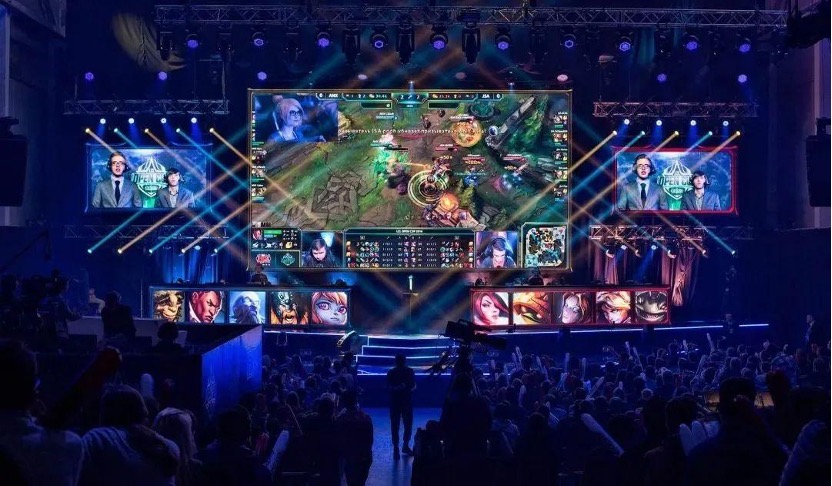
Where is the LED Screen for Esports Applied?
The building of the tournament venue is obviously crucial given that the esports game is recognized as an international event. Each esports venue will be equipped with large esport LED screens.
According to the Esports Venue Construction Standards released by the China Stadium Association in 2017, esports venues are divided into four levels: A, B, C and D, and esports venues above the C level must be equipped with LED display screens. The standard also specifies that the venues should comprise at least one primary screen and numerous subsidiary screens to ensure that the audience can watch comfortably from all angles under normal circumstances.
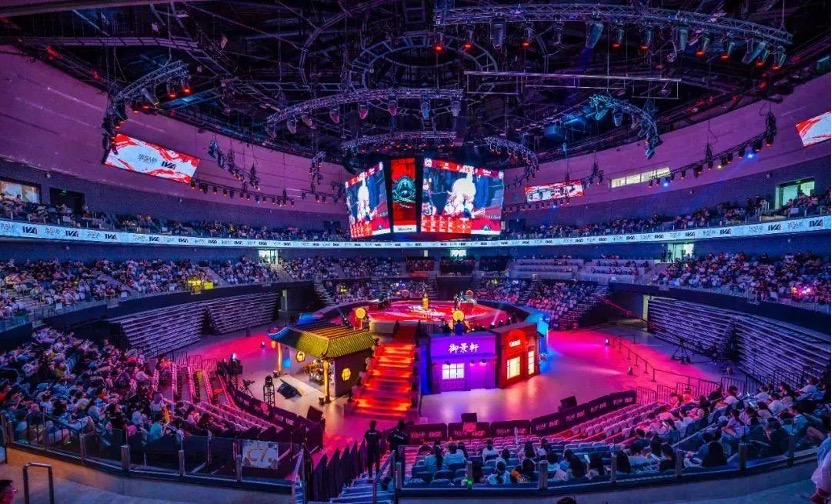
Technical Requirements for LED Screens for Esports
As with conventional sports events, the emphasis of esports competition is live gaming and huge screen viewing. LED screens for esports in real-time presentation, network information dissemination, and ultra-high definition display, however, have more demanding technical requirements than those for general sports events.
1. Low latency, high frame rate and high refresh rate
In contrast to other display technologies, the LED screens for esports must broadcast the game screens in real time with a very low latency in order to fully immerse the audience in the intense action. To enable real-time flawless synchronization without scan lines and lagging, the delay at the receiving end of the LED display screen should be less than 2 frames.
On top of that, LED screens for esports require nanosecond screen response time, high frame rate of 144fps, and high refresh rate of at least 3,840Hz to guarantee a consistent viewing experience for both online and offline viewers. If the screen response time has a delay of 3-5 milliseconds, there are heavy shadows and trailing when playing intense sports visuals, greatly affecting the viewing experience of the audience.
2. Ultra high definition (UHD)
The most fundamental demand for LED display screens across all businesses is now HD display. However, HD display is crucial during an esports competition since it makes it easier for players and spectators to see every detail of the game, including fine textures, small symbols, and text.
High-definition displays for esports contests are now feasible thanks to advancements in fine pitch LED display technology. The smaller the pixel pitch a LED screen for esports has, the more LED pixels work on the LED module to produce HD images. For instance, a P1.8 LED display has at least 284,444 pixels square meters to produce high-definition images.
3. High brightness, high contrast and high grayscale
Since esports events are frequently hosted indoors, there will inevitably be intense stage lighting. As a result, the esports LED screens must feature high brightness, high contrast, and high grayscale in order to completely restore the original color of the source image and display as many details as possible for each game frame.
To further enhance image quality, this necessitates LED screens for esports to additionally support HDR10. With HDR10, you can distinguish a wider range of colors and depth between lighter and darker tones. HDR10 technology also combines the effects of dimming and altering brightness levels to produce game images at the greatest nits levels in addition to balancing color and contrast.
4. Large size and wide angle
As opposed to traditional sports competitions, what draws the audience’s attention is the exciting screen feedback during games, not the player’s action scenario. Therefore, the size of the LED screens for esports must be large enough, and the four side viewing screens must be very simple to construct. This necessitates flexible installation capabilities and seamless splicing in the esports LED displays.
Furthermore, the LED screens for esports need to have a wide angle so that everyone in the stadium can see the image on the screen well. The LED display screens that have a 160° horizontal viewing angle and a 140° vertical viewing angle can dramatically enhance the viewing experience for audiences in various locations on the scene.
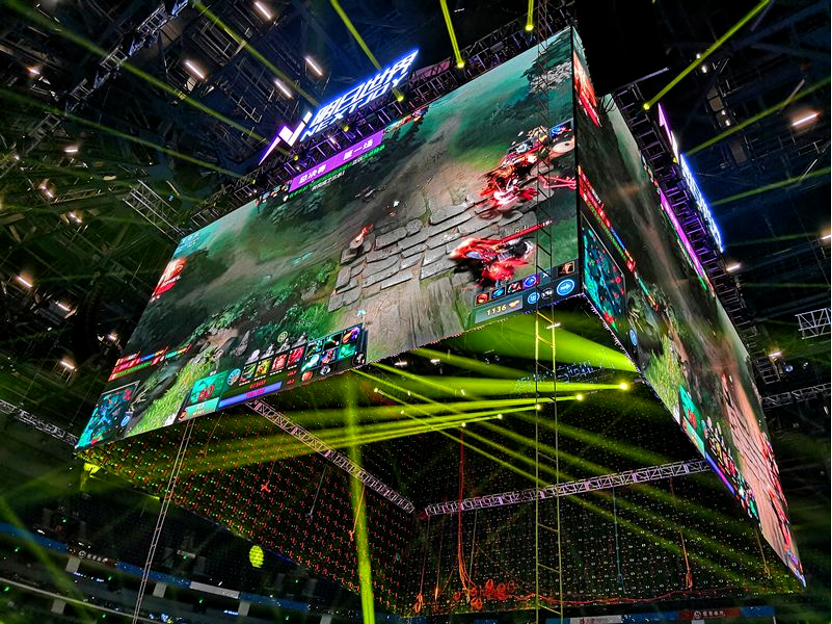
5. Wide color gamut
The vibrant nature of the gaming industry further raises expectations for the color display capabilities of LED display screens. Wide Color Gamut is also required for LED screens for esports in order to enhance color accuracy and bring each game character to life for the audience.
6. Extremely high stability
The Actions per minute (APM) of professional gaming players can be more than 300 times, and some even more than 500 times. Therefore, the esports LED screens need to be highly stable and durable. To avoid negative influence on participants and the audience’s viewing experience, the esports LED display cannot flicker or go out or in other unexpected circumstances while there is a live broadcast.
RIGARD LED Screens for Esports
As a reputable manufacturer of LED display screens, RIGARD is dedicated to enhancing your LED displays for gaming applications through innovative display technology. Since we are experts in the fine pitch LED display technology, we can provide you with a variety of high definition LED display solutions based on your unique needs.
RIGARD P1.9 LED display, with a pixel pitch of 1.9 mm, is crucial in producing the sharp, detailed images required for esports competitions. With such a small pixel pitch, images appear exceptionally clear and detailed even at close look. Moreover, the high resolution of RIGARD P1.9 LED display enables it to render graphics and video in Ultra High Definition (UHD) or 4K resolution, giving viewers a more lifelike viewing experience.
Another key feature of RIGARD LED screens for esports is the high refresh rate and low latency. Our P1.9 LED display has a refresh rate of up to 7,680Hz and a screen response time in the nanosecond range, much higher than other LED screens, helping to minimize latency, blurring and other motion artifacts.
One of the most significant advantages of RIGARD P1.9 LED display is that it has standard color accuracy, up to 1000 nits brightness and a high gray scale of 16 bits. Our LED display screens producing more vivid and realistic colors, is the best choice for esports LED screens to give your audiences an immersive viewing experience.
Apart from that, RIGARD LED screens for esports can be installed via modular splicing, enabling them to be set up in a number of forms and sizes to accommodate various locations and event types. They are simple to assemble and disassemble due to its lightweight construction.
In short, the high refresh rate, low latency, high brightness, high contrast ratio, color accuracy and flexible installation make RIGARD P1.9 LED displays ideal for a variety of esports events, from small tournaments to large events with thousands of participants.

